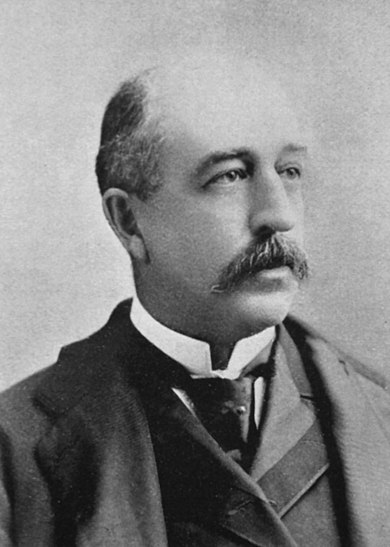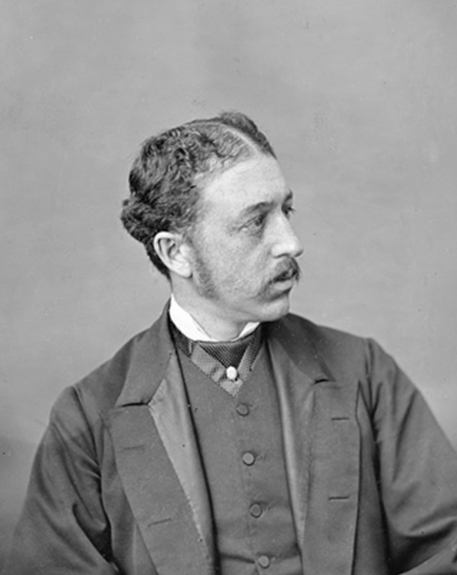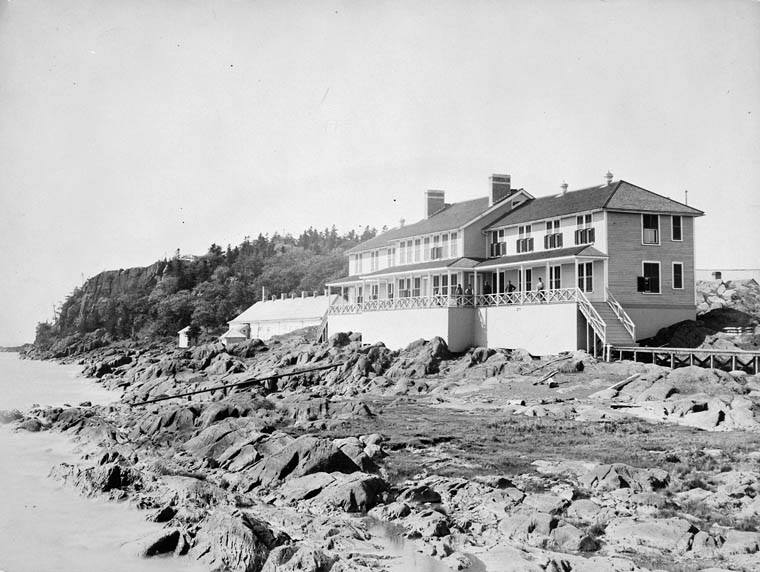
Infectious Disease Specialist And First Federal Director General Of Public Health In Canada : Frederick Montizambert
Frederick Montizambert
Section 41, Lot 40
Born in Quebec on February 3, 1843 into a family belonging to the administrative and judicial elite of Quebec City, Montizambert graduated from the Faculty of Medicine of the Laval University in 1863 and travelled to Edinburgh, Scotland for post–graduate training at the prestigious Faculty of Medicine of the University of Edinburgh.

Frederick Montizambert married Mary Jane Walker on June 5, 1865 in the English Cathedral of the Holy Trinity, Quebec City In 1866, he assumed the duties of medical inspector at the Grosse–Ile Quarantine station.
Grosse Île and the Irish Memorial National Historic Site commemorates the significant waves of immigration welcomed to Canada between the opening of the 19th century and the First World War.
During this period Québec was Canada's chief port of entry, receiving more than four million immigrants. Deadly infectious diseases and a rudimentary scientific understanding of how they could be controlled required that, between 1832 and 1937, Grosse Île serve the vital function of a quarantine station protecting the public health. Priests, doctors, nurses and other staff often risked their own lives to welcome and care for the new arrivals.
Grosse Île also serves as a memorial to the tragic events endured by Irish immigrants here, chiefly during the typhus epidemic of 1847, when nearly 100,000 people, the majority escaping the Great Famine then ravaging Ireland, set sail for Canada. More than five thousand ended their journey buried on this island. Three years later, in 1869, he took up the post of medical superintendent, a post he held for thirty years. At the time, the Quarantine station was the main point of entry for all immigrants coming to Canada from Europe, had a long history of deadly cholera epidemics.
His role as superintendent gave him the opportunity to turn the station into a model of its type who influence extended throughout the country, even to the United States and Europe. When he took up this position, he put in place scientific concepts and principles which would revolutionize the struggle against infectious diseases during the last two decades of the 19th century, and herald the introduction of modern public health programs.
Dr. Montizambert’s innovative quarantine methods, based on the knowledge of the newly discovered microbes and their relationship to contagion succeeded in reducing morbidity and mortality among the vulnerable newcomers. Much more important was the fact that, on Montizambert’s initiative, the station rapidly and radically altered its scientific approach.

From the 1880s, on the heels of major discoveries in microbiology, disinfectants and vaccination put an end to lengthy confinement. In 1892 a bacteriological laboratory was built on the island, enabling bacteria of infectious diseases to be quickly identified. In this way, serious illnesses could be distinguished from ordinary infections that could be treated at Quebec.
In 1894, while remaining at Grosse Île, Montizambert was appointed by Ottawa to be superintendent of Canadian quarantine stations. As a result of this appointment, the stations on Lawlor Island near Halifax, Partridge Island in New Brunswick, and William Head on the Pacific coast soon adopted the technical and scientific procedures that had been developed on the St Lawrence.
In 1899, Dr. Montizambert was appointed to the prestigious post of the first federal Director General of Public Health in Canada. He became responsible for the administration of quarantine stations throughout the Dominion. While pursuing his passion for scientific and technical advances, he participated in the development of a revolutionary treatment for leprosy. He played an active part in developing a highly effective treatment for leprosy, which was used in New Brunswick and British Columbia. As an adviser to the government on public health, he submitted many recommendations of all kinds, including a commitment by the federal government to the fight against tuberculosis, inspection of health conditions on passenger trains, and funding of bacteriological laboratories. But there was one project especially dear to his heart: the establishment of a real federal department of health.
As a representative of the Canadian Medical Association, Dr. Montizambert succeeded in 1919 in convincing the Federal Government to establish the Canadian Department of Health. In 1867, he joined the Canadian Medical Association and was its president from 1907 to 1908.
In 1890, he was elected President of the American Public Health Association. He was made a companion of the Imperial Service Order in 1903 and a companion of the Order of St Michael and St George in 1916. In 2001, he was inducted into the Canadian Medical Hall of Fame.
Dr. Montizambert died on November 2, 1929 at the age of 86.



